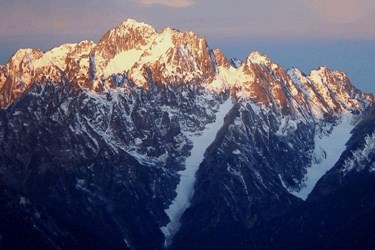Quake-Generated Surface Plasmons Allow Radio Waves To Reach Distant Locations
By Jof Enriquez,
Follow me on Twitter @jofenriq

Scientists have discovered that surface plasmons triggered by seismic activity could absorb and reradiate electromagnetic waves over the shadowed opposite sides of mountains and toward distant areas beyond peaks.
Surface plasmons are oscillating waves of positive-charged electrons with an associated electromagnetic field. They exist in metals with the right material properties, and are being exploited to create plasmonic antennas, among other purposes.
But they also exist naturally, moving over the Earth's surface when induced by underground earthquakes. Seismic stress produces more positive charges on the ground, such that the resulting surface plasmon's frequency becomes substantially higher than the radio wave frequency. When these positive charges reach the peaks of mountains, they result in "strong coupling" with traveling radio waves.
"Depending on the density of the electrical charges on the ground surface, the interaction becomes strong enough to cause intense and random scattering and diffraction of the radio wave from the rough surface of the mountain topography," state the researchers in the study, published in the journal Radio Science.
Typically, mountains act as barriers to radio waves, their opposite side creating so-called dark zones where radio signals fail to propagate. With the aid of the surface plasmon, however, "Mountain peaks thus act as a secondary source of radio waves; unexpectedly, radio waves are reradiated from the peaks into various directions by the anomalous diffraction and scattering, and the reradiated wave can propagate beyond the line of sight over mountains to reach distant locations."
To test this new mode of radio wave diffraction, a supercomputer using both an ideal cone structure and a model of the Tsurugidake peak in Japan, showed that surface plasmons scattered over surface bumps and mountain peaks, were able to randomly reradiate incoming radio waves into a narrowly convergent, beam-like wave, focused on a small area, according to EOS Earth and Space Science News.
The study demonstrates that naturally occurring surface plasmons can be exploited to propagate radio waves beyond imposing barriers such as mountains, thereby eliminating dark zones. Also, by studying these peculiar radio waves coupled with surface plasmons, researchers can now analyze crustal rocks with potential seismic activity over a broader area spanning a few hundred kilometers.
